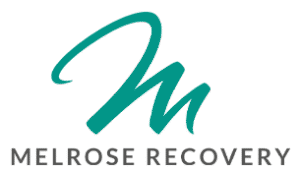CBT Therapy
CBT Therapy (Cognitive Behavioral Therapy) – Welcome to Melrose Recovery, your pathway to transformation and healing. Located in the vibrant heart of Los Angeles, California just moments away from iconic Hollywood and the picturesque beaches of Santa Monica and Venice, we are dedicated to changing lives. Since 2015, our comprehensive CBT techniques therapy services will empower your positive thoughts and growth. Tailored to meet each individual’s unique needs on their journey.
CBT methodology helps individuals recognize and change negative or unhelpful thought patterns. By reshaping these thoughts into more balanced and realistic ones, people can improve how they feel and behave in daily life. The overall goal is to promote healthier thinking, emotional well-being, and more adaptive behaviors.

Why Choose Melrose Recovery for CBT Therapy Treatment in Los Angeles?
At Melrose Recovery Detox and Inpatient Treatment Center, we provide a safe and supportive environment for individuals seeking recovery from substance abuse and co-occurring mental health disorders. Located in the heart of Los Angeles, our rehab center offers comprehensive care through personalized individual and group therapy, led by a dedicated clinical team. Whether you’re struggling with addiction, mental health challenges, or both, our medically trained staff is here to guide you toward lasting healing and recovery.
Understanding CBT Therapy
CBT Therapy, or Cognitive Behavioral Therapy, is one of the most well-known and widely used forms of psychotherapy. Often regarded as the gold standard in mental health treatment, CBT helps individuals recognize and reshape negative thought patterns to improve emotional well-being and behavior.
First introduced by Dr. Aaron Beck in the 1960s, CBT has since become a foundational approach in therapy. Its strength lies in helping people identify unhelpful thinking, emotional reactions, and behavioral habits—and then replace them with healthier, more productive alternatives. This process supports emotional healing and leads to a better quality of life.
One of CBT’s most valuable traits is its adaptability. Since mental health treatment is never one-size-fits-all, CBT is often integrated with other therapeutic methods or medication to create a personalized, holistic treatment plan.
If you or someone you know is facing emotional or behavioral challenges, CBT can be a powerful tool on the path to recovery. Read on to discover how it works, what it treats, and what you can expect from therapy.
Types of CBT Approaches – CBT Therapy
CBT includes a variety of strategies and techniques designed to challenge unhelpful thoughts and behaviors. Some therapeutic approaches that fall under the CBT umbrella include:
1. Cognitive Therapy
Focuses on identifying and changing distorted thinking patterns and the emotions or behaviors linked to them.
2. Rational Emotive Behavior Therapy (REBT) – CBT Therapy
Helps you spot irrational beliefs, challenge them, and adopt more rational, constructive thinking.
3. Dialectical Behavior Therapy (DBT) – CBT Therapy
Combines CBT with mindfulness and focuses on emotional regulation, distress tolerance, and improving interpersonal relationships.
4. Multimodal Therapy – CBT Therapy
Targets multiple areas of psychological functioning—including behavior, feelings, imagery, thoughts, interpersonal issues, and biology—using CBT techniques.
The 5 Stages of CBT Therapy (Cognitive Behavioral Therapy)
CBT Therapy (Cognitive Behavioral Therapy) is typically structured into five key stages. Each stage builds on the previous one to help individuals better understand and manage their thoughts, feelings, and behaviors.
1. Assessment and Engagement
This initial phase involves gathering information about the client’s concerns, history, and goals. The therapist builds rapport, explains how CBT works, and begins to understand the patterns driving the client’s difficulties.
2. Formulation
In this stage, the therapist and client work together to create a clear understanding (or “formulation”) of how the client’s thoughts, emotions, and behaviors are connected. This map helps guide treatment by identifying unhelpful thinking patterns and behaviors.
3. Active Intervention
This is the core phase of CBT, where the client learns and practices new skills. Techniques may include cognitive restructuring (challenging negative thoughts), behavioral experiments, and exposure exercises. The goal is to develop healthier thinking and behavior patterns.
4. Maintenance and Relapse Prevention
Once progress is made, the focus shifts to maintaining gains. Clients learn strategies to handle future challenges and reduce the risk of relapse by strengthening coping skills and reinforcing new habits.
5. Termination and Evaluation
In the final stage, therapy is brought to a close. The client and therapist review progress, discuss long-term goals, and evaluate what has been achieved. The client leaves with tools to maintain improvements independently.
What Is the Goal of CBT Therapy?
CBT helps individuals recognize and change negative or unhelpful thought patterns. By reshaping these thoughts into more balanced and realistic ones, people can improve how they feel and behave in daily life. The overall goal is to promote healthier thinking, emotional well-being, and more adaptive behaviors.
What CBT Can Help Treat – CBT Therapy
CBT is evidence-based and effective in treating a wide range of mental and emotional health conditions. Common conditions treated include:
-
Anxiety disorders
-
Depression (Major Depressive Disorder)
-
Bipolar disorder
-
Panic attacks
-
Phobias
-
Eating disorders
-
Sleep disorders
-
Personality disorders
-
Substance use disorders
CBT is also used to support individuals dealing with life stressors such as grief, divorce, low self-esteem, chronic illness, or work-related stress.
How CBT Works: The ABC Model – CBT Therapy
CBT is rooted in the ABC model, developed by psychologist Dr. Albert Ellis:
-
A = Activating Event (a trigger or situation)
-
B = Beliefs (your thoughts or interpretations about the event)
-
C = Consequences (the emotional and behavioral outcomes)
The core idea is that your beliefs (B), not the events themselves (A), lead to your emotional and behavioral responses (C). Changing those beliefs can lead to healthier emotional outcomes and behavior.
The 5 Stages of CBT (cognitive-behavioral therapy)
CBT typically unfolds in five key stages:
1. Assessment and Engagement
Your therapist gathers background information, identifies your goals, and builds a strong therapeutic alliance with you.
2. Formulation
Together, you and your therapist explore how your thought patterns contribute to emotional or behavioral challenges.
3. Active Intervention
You begin practicing CBT techniques to challenge distorted thoughts and develop healthy coping skills.
4. Maintenance and Relapse Prevention
Strategies are reinforced to help you maintain progress and prevent setbacks.
5. Termination and Evaluation
Therapy ends with a review of your progress and a plan for sustaining your improvements.
Benefits of CBT
CBT is effective because it helps you understand how your thoughts affect your feelings and behaviors—and teaches you how to take control of that process. Key benefits include:
-
Identifying and changing unhelpful thought patterns
-
Effective treatment for a broad range of mental health conditions
-
Relatively short-term (usually 5–20 sessions)
-
Can be delivered in-person or online
-
Cost-effective and research-supported
How Effective Is CBT? – CBT Therapy
CBT is one of the most extensively studied forms of therapy. Dozens of large-scale studies and reviews have confirmed its effectiveness in treating everything from anxiety and depression to psychosis and even criminal behavior.
A review of over 100 meta-analyses concluded that CBT consistently improves quality of life across both mental and physical health conditions.
Potential Challenges and Risks – CBT Therapy
While CBT is generally safe and effective, it may involve some discomfort or challenges:
-
Emotional discomfort: Exploring painful thoughts or feelings can be difficult.
-
Stress or anxiety: Facing fears (such as in exposure therapy) may initially increase stress.
-
Perceived self-blame: Since CBT focuses on personal thought patterns, some may feel blamed for their struggles.
-
Structured approach: Its systematic nature may feel rigid to those unfamiliar with this style.
-
Gradual progress: CBT requires active participation and practice, which can lead some to drop out if results aren’t immediate.
That said, these challenges can be navigated effectively with the support of a skilled therapist.
What to Expect in CBT – CBT Therapy
Starting CBT may feel intimidating, but understanding what’s ahead can ease the transition. During your first session, you’ll likely complete intake forms covering your medical history, current symptoms, and therapy goals.
Subsequent sessions focus on building rapport, setting clear goals, and introducing CBT techniques. You’ll often be given exercises to practice between sessions—such as journaling or trying out new thinking strategies in real-life situations.
Finding the Right CBT Therapist – CBT Therapy
If you’re ready to try CBT, the next step is finding a licensed mental health professional trained in CBT. This process can feel overwhelming, especially if it’s your first time seeking therapy.
At Melrose Recovery, we simplify that process. Our team works to understand your needs, challenges, and goals, then connects you with a skilled CBT therapist who’s the right fit. Our mission is to create a safe, supportive environment where you can heal and grow.
Ready to explore how CBT can help you? Reach out to Melrose Recovery today to start your journey toward better mental health and emotional resilience.
Frequently Asked Questions About CBT Therapy
What is CBT Therapy (Cognitive Behavioral Therapy)?
CBT is a type of psychotherapy that helps individuals identify and change negative thought patterns and behaviors that contribute to emotional distress.
Who developed CBT?
CBT (cognitive behavior therapy) was developed by Dr. Aaron T. Beck in the 1960s.
What is the core principle of CBT (cognitive-behavioral therapy)?
The core principle is that thoughts, feelings, and behaviors are interconnected, and changing negative thoughts and behaviors can improve emotional well-being.
What mental health conditions is CBT commonly used to treat?
Depression, anxiety disorders, PTSD, OCD, eating disorders, and substance use disorders.
How long does CBT typically last?
It usually lasts between 5 and 20 sessions, depending on the condition and individual needs.
What is a cognitive distortion?
Cognitive distortions are biased, irrational ways of thinking that reinforce negative emotions or behaviors (e.g., catastrophizing, black-and-white thinking).
What is the ABC model in CBT?
A = Activating event, B = Beliefs, C = Consequences (emotional/behavioral responses).
What are automatic thoughts?
These are quick, reflexive thoughts that occur in response to a situation, often without conscious awareness.
How does CBT help with anxiety?
CBT helps individuals identify irrational fears, challenge them, and develop coping strategies like relaxation and exposure.
Is CBT effective for children and adolescents?
Yes, CBT is effective across age groups and can be adapted for children and teens.
What is behavioral activation in CBT?
A technique used to help individuals engage in activities that bring pleasure or a sense of accomplishment, often used in treating depression.
What is thought challenging?
It’s the process of evaluating and restructuring negative or irrational thoughts to more balanced ones.
What are core beliefs in CBT?
Deep-seated, often unconscious beliefs about oneself, others, or the world that influence thoughts and behavior.
What role does homework play in CBT?
Homework is crucial in CBT; clients practice skills and techniques learned in therapy to reinforce progress.
Can CBT be done online or through self-help books?
Yes, online CBT programs and guided self-help can be effective for some individuals.
What’s the difference between CBT and traditional talk therapy?
CBT is structured, goal-oriented, and focused on present thoughts and behaviors, unlike traditional talk therapy, which may explore past experiences more deeply.
What is exposure therapy in CBT?
A technique that involves gradual and controlled exposure to feared situations to reduce anxiety over time.
Is CBT evidence-based?
Yes, CBT is one of the most researched and evidence-based forms of psychotherapy.
How does CBT address insomnia?
CBT for insomnia (CBT-I) includes strategies like sleep restriction, stimulus control, and cognitive restructuring.
What is a CBT worksheet?
A structured form used to guide clients through identifying and challenging thoughts, tracking mood, or planning behavioral changes.
Can CBT be combined with medication?
Yes, CBT is often used in conjunction with medication for conditions like depression or anxiety.
What’s the role of the therapist in CBT?
The therapist acts as a coach or guide, helping clients learn and apply CBT techniques to real-life problems.
Is CBT culturally adaptable?
Yes, CBT can be adapted to fit various cultural beliefs and practices while retaining its core principles.
What are safety behaviors in CBT?
Actions taken to avoid feared outcomes, which can maintain anxiety (e.g., always carrying medication for panic attacks).
How is progress measured in CBT?
Through regular assessments, self-report measures, and review of goals and symptom reduction.
Don’t Wait to Look for a Drug Addiction Treatment Program
Get In Touch
info@melroserecovery.com
501 North Mariposa Ave, Los Angeles, CA 90004








